Asia FX cautious amid US govt shutdown; yen tumbles after Takaichi’s LDP win
Introduction & Market Context
Hexicon AB (HEXI) presented its Q1 2025 interim report on May 28, showcasing strategic divestments and portfolio adjustments amid signs of recovery in the floating offshore wind market. The company’s stock responded positively, rising 11.11% to 0.26 on the day of the presentation, reflecting investor optimism about Hexicon’s positioning in the evolving renewable energy landscape.
The presentation highlighted the current state of the floating offshore wind industry, which is beginning to emerge from a challenging period marked by rising interest rates, supply chain bottlenecks, and delayed decision-making processes.
As shown in the following market development timeline, the floating wind sector is positioned for growth after navigating recent economic headwinds:
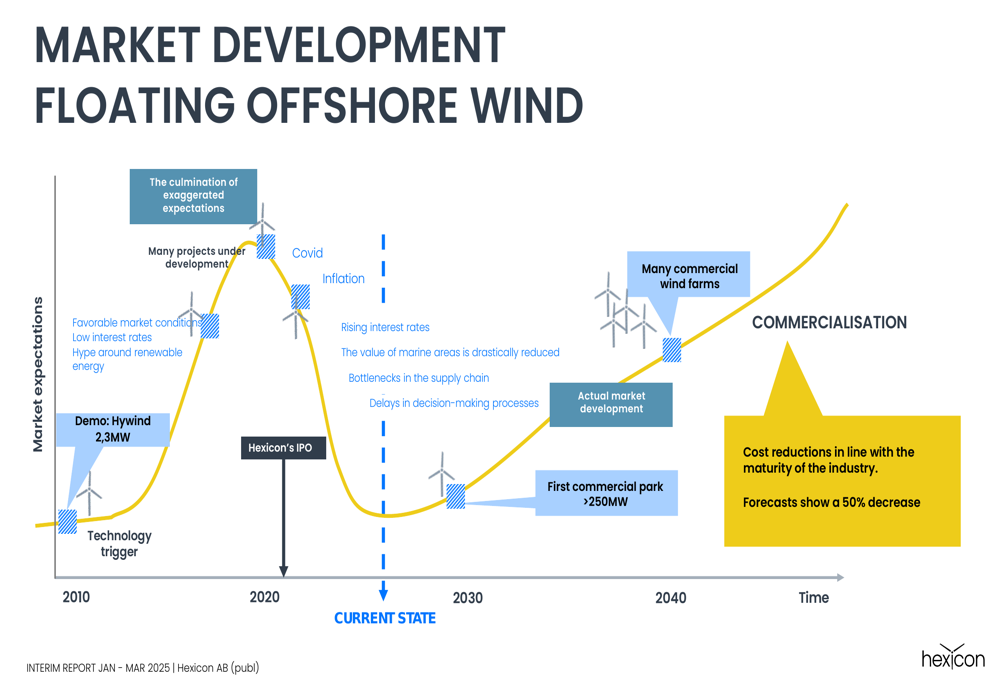
Strategic Initiatives
The most significant Q1 development was Hexicon’s divestment of two early-stage Italian floating offshore wind projects totaling 1,225 MW to Ingka Investments (IKEA’s investment arm) and Oxan Energy. The transaction, signed in March and closed in April, brought in €2.5 million upfront with potential milestone payments that could reach a total of €20 million.
This divestment aligns with Hexicon’s established strategy of developing early-stage projects and selling stakes to generate revenue, as illustrated in their historical transaction summary:
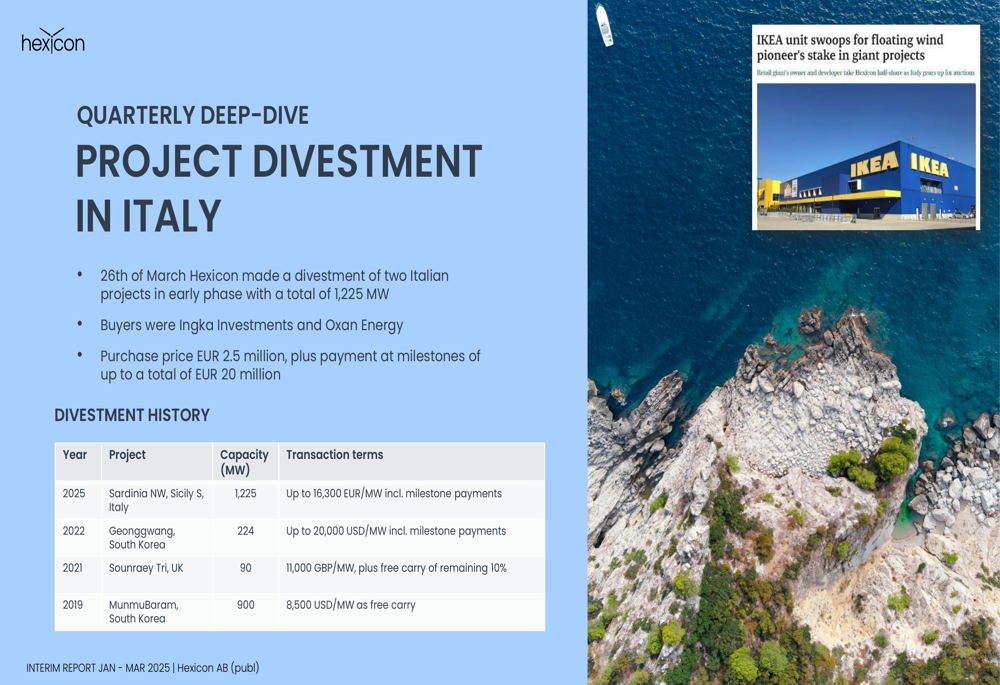
CEO Markus Thor emphasized in a recent earnings call that "Our core revenue generating capacity lies in divesting projects," highlighting the importance of this transaction to the company’s business model.
Quarterly Performance Highlights
Hexicon’s Q1 was marked by several significant developments beyond the Italian divestment. In January, the company’s Swedish joint venture, Freja Offshore, received a Natura 2000 permit for the Mareld floating offshore wind farm, representing progress in one of its key markets.
The company’s project portfolio underwent adjustments during the quarter, with a decrease from Q1 2024 levels due to rejected Swedish projects and canceled South Korean projects (Pohang 1 and 2). As of Q1 2025, Hexicon maintained a total portfolio of 15.3 GW, with 8.7 GW in active projects across five markets and 54% average ownership in active projects.
The following chart illustrates Hexicon’s current project portfolio composition:

Detailed Financial Analysis
While the presentation focused more on strategic positioning than detailed financials, the €2.5 million Italian divestment represents a significant near-term cash injection for Hexicon. The company’s stock has shown volatility over the past year, trading between 0.13 and 1.00, with the current price of 0.26 representing a recovery from recent lows.
The potential for up to €20 million in additional milestone payments from the Italian projects provides a pathway to future revenue, though these payments are contingent on project development progress. This transaction structure is consistent with Hexicon’s previous divestments, including projects in South Korea and the UK, where the company has secured upfront payments plus milestone-based compensation.
Competitive Industry Position
Hexicon positioned itself within the broader context of the evolving wind energy market, highlighting the transition from onshore to offshore fixed-bottom, and now to floating offshore wind technology. The company noted that while onshore wind is established in over 100 countries and fixed-bottom offshore in 26 countries, floating offshore wind is currently operational in just 7 countries, representing significant growth potential.
The presentation included GWEC forecasts showing floating offshore wind capacity increasing to 8,500 MW by 2030 and 31,000 MW by 2033, with expected compound annual growth rates of 82% (2024-2028) and 54% (2029-2033).
The following chart illustrates the projected growth trajectory for new floating wind installations globally:
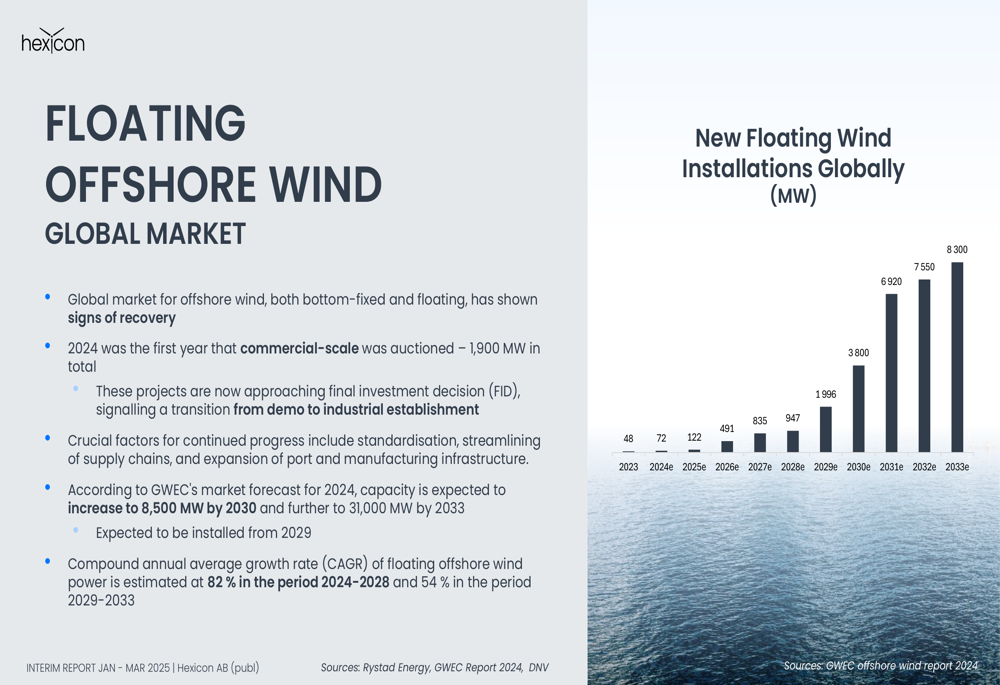
Strategic Initiatives
A key technological differentiator for Hexicon is its proprietary TwinWind™ technology, which reached an important milestone in Q1 with the completion of its first set of load assessments. The company reported that a turbine OEM conducted an evaluation for a floating foundation hosting two third-party turbines, with results showing promising load performance and no significant risks identified.
This technological progress supports Hexicon’s path toward demonstration and commercialization, as shown in the following image:
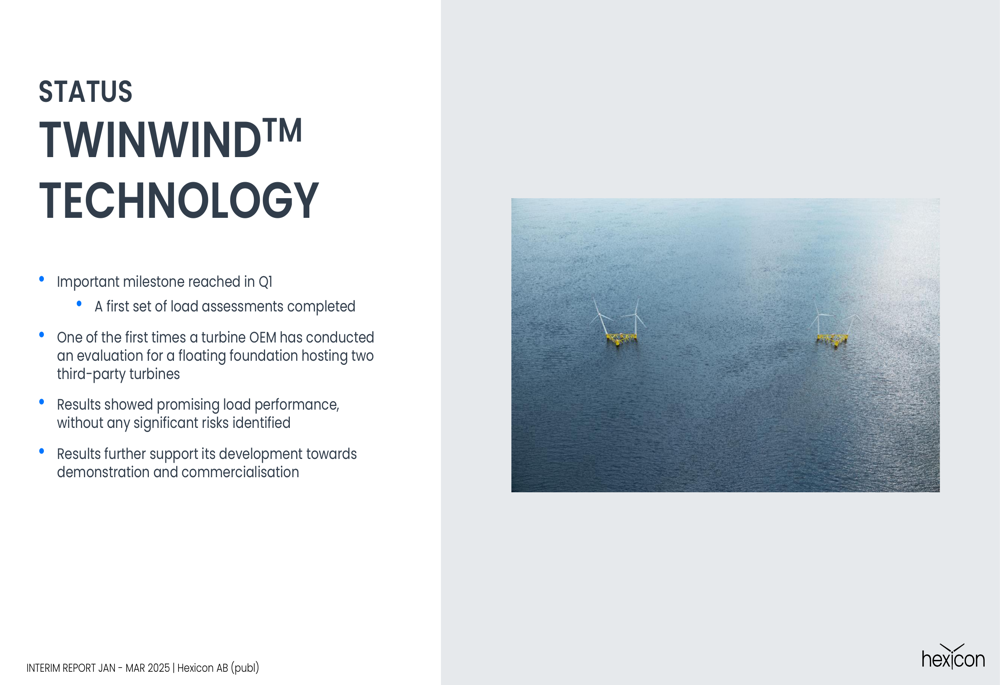
Forward-Looking Statements
Hexicon identified South Korea as a critical market for its future growth, despite recent political turbulence. The presentation detailed how the imposition of martial law in late 2024 and the subsequent impeachment of President Yoon Suk-Yeol in April 2025 created uncertainty affecting investor behavior. However, with re-elections scheduled for June 3rd and front-runner Lee Jae-myung described as pro-renewables, the company expects investor appetite to return to the South Korean market.
The company’s Munmubaram project (750 MW) in South Korea, in which Hexicon holds 100% ownership, has already secured Electricity Business Licenses, environmental approvals, and a transmission service agreement with KEPCO.
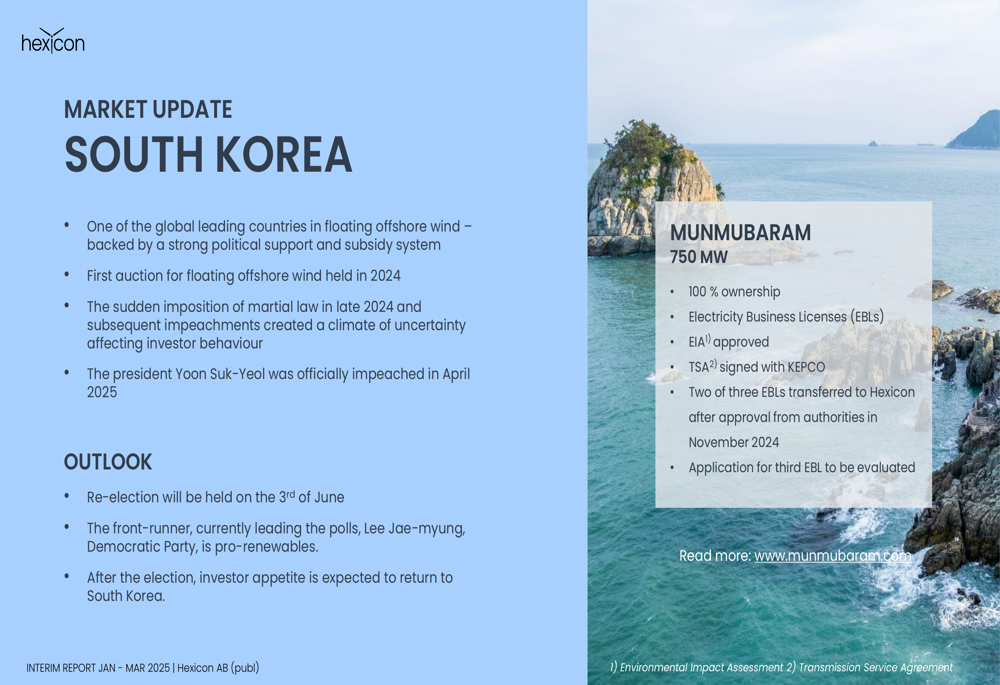
For 2025, Hexicon outlined three strategic focus areas: portfolio development (focusing on core projects and divesting selected assets), technology development (maintaining technical asset value and establishing market routes), and financing (improving operational efficiency and establishing sufficient runway).
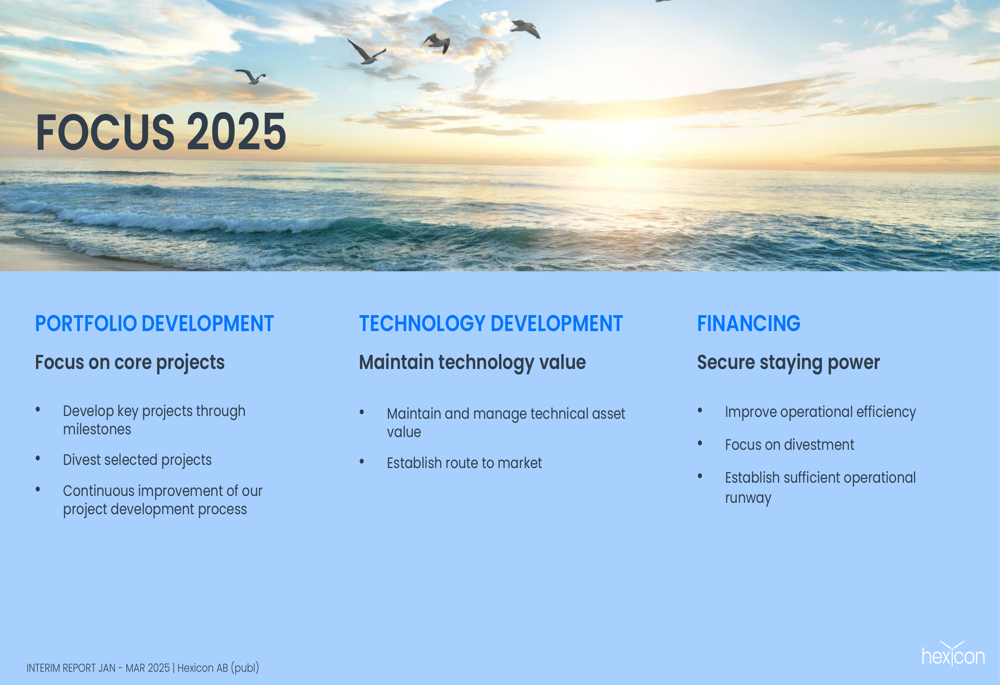
Conclusion
Hexicon’s Q1 2025 presentation revealed a company navigating the early stages of a recovering floating offshore wind market through strategic divestments, technology development, and focused project advancement. While facing challenges in certain markets and operating in an industry still approaching commercialization, the €2.5 million Italian divestment provides near-term capital as the company positions itself for the projected growth in floating offshore wind installations beginning in 2029.
As CEO Markus Thor noted in a recent statement, "We are seeing a bottom of the market. We are seeing things moving back up," suggesting cautious optimism about the sector’s trajectory as Hexicon continues to execute its development-to-divestment business model.
Full presentation:
This article was generated with the support of AI and reviewed by an editor. For more information see our T&C.
